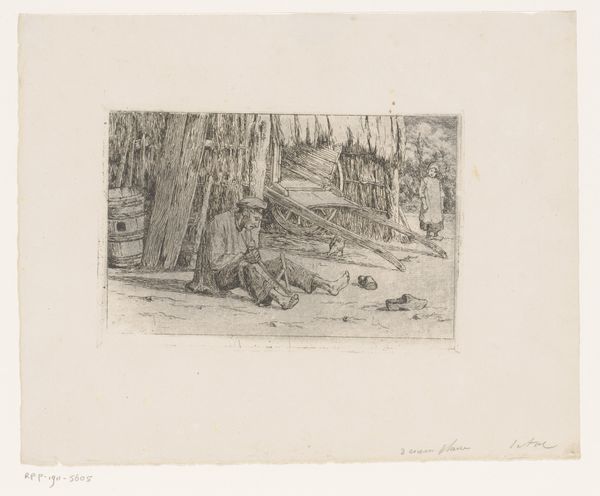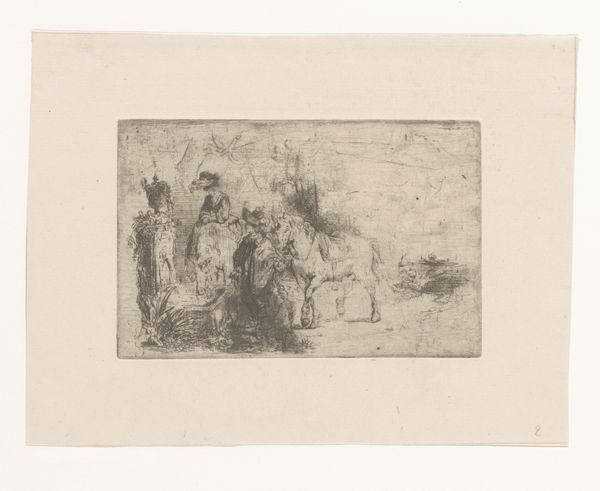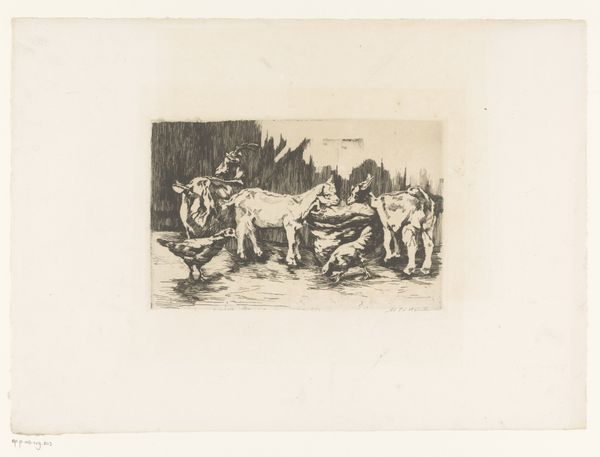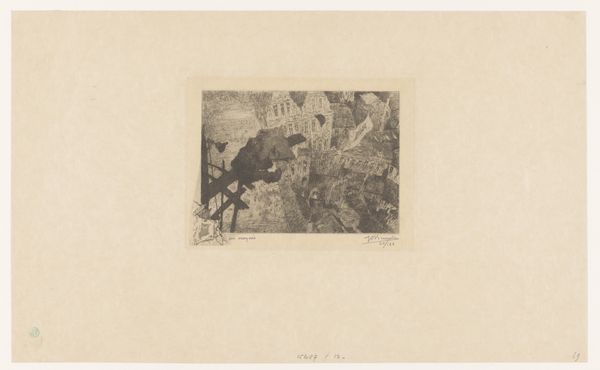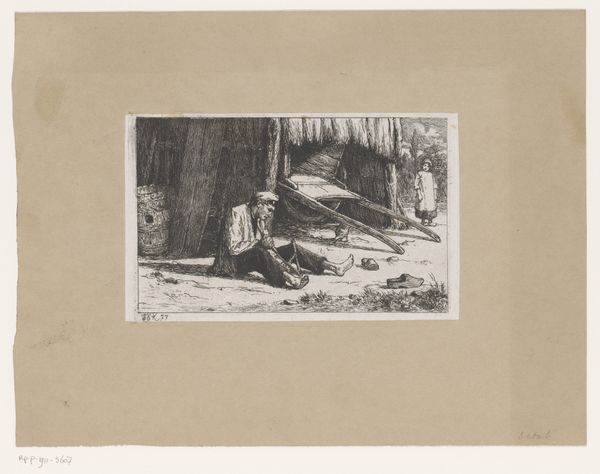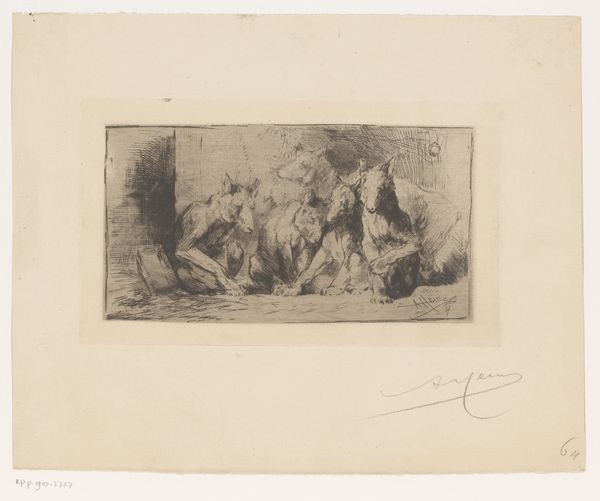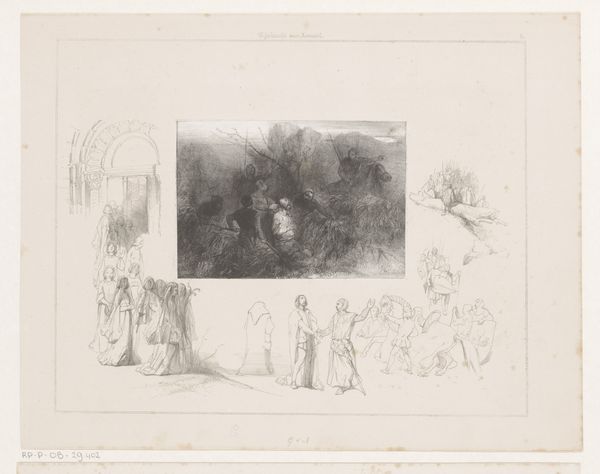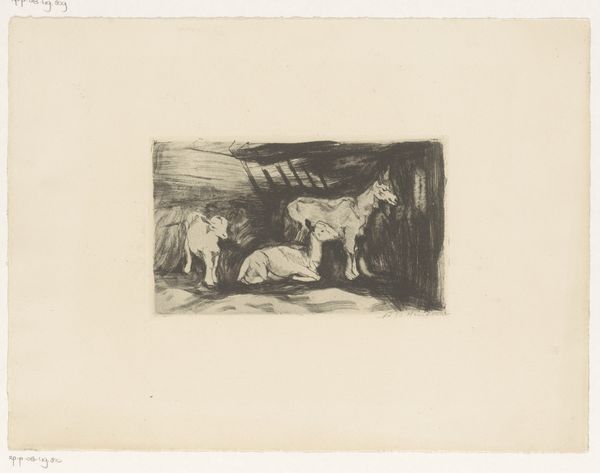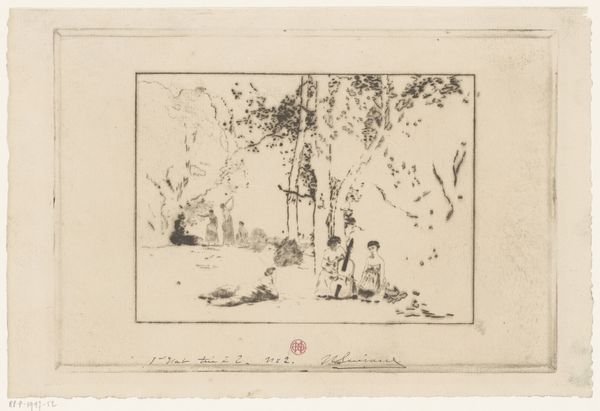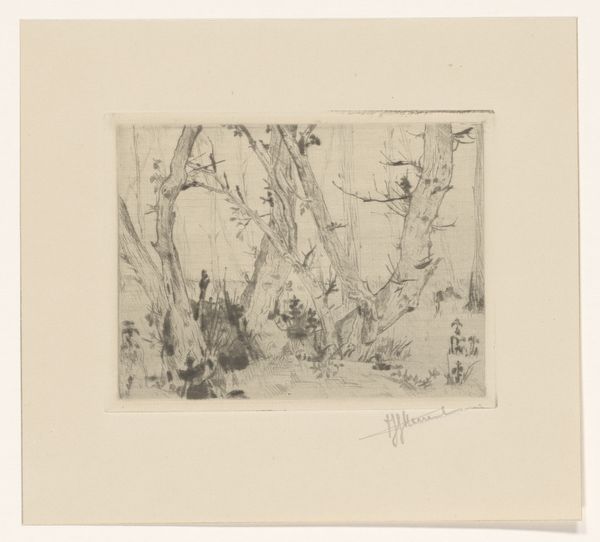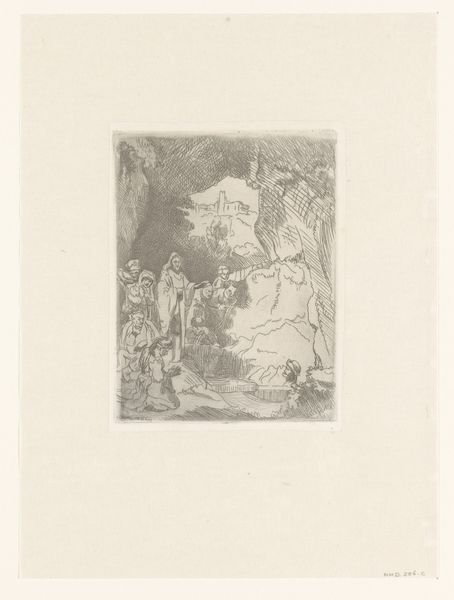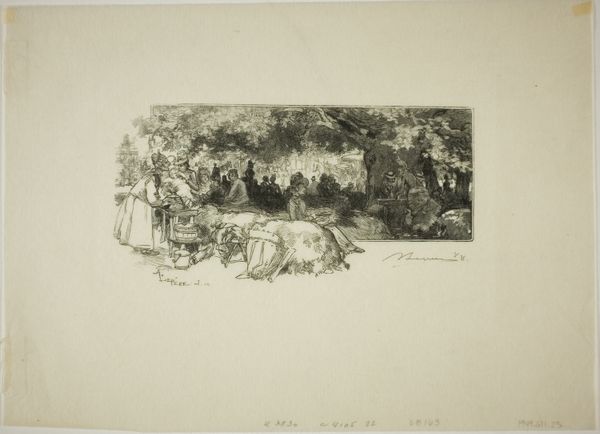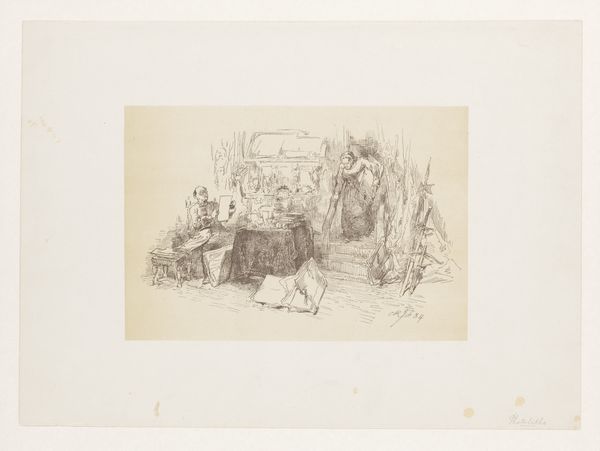
Dimensions: 79 × 118 mm (plate); 201 × 279 mm (sheet)
Copyright: Public Domain
Editor: This is "At the Dressmaker," an etching on paper made around 1895-96 by William James Glackens, currently residing at The Art Institute of Chicago. It looks so…intimate, almost claustrophobic, with all those clothes packed into the scene. What story do you think it’s trying to tell? Curator: I see a direct representation of the garment industry and female labor during that time. The emphasis is clearly on the process – the meticulous work, the cramped conditions. This etching challenges traditional boundaries, elevating what might have been dismissed as "mere" craft to a subject worthy of artistic exploration. Consider the means of production: the needle, the thread, the close quarters impacting those creating the garments. Editor: So, the image is as much about the social conditions as it is about the aesthetic? Curator: Precisely! Glackens pushes us to consider who is producing the goods, the materials, and where it will eventually be consumed, therefore blurring the line between art and the working-class realities that support much of its creation and circulation. He highlights the normally unseen human element in commodity production. Do you get a sense of what type of material they’re using from how the garment hangs and its density in rendering? Editor: I think there are some finer fabrics, judging by the drape, but the shading and style obscure fine detail. That makes sense when you frame it as labor. It seems Glackens focused less on precise material and more on the overall feel of production, rather than consumption of finished fine materials. Curator: Indeed, a telling choice emphasizing labor and challenging any hierarchy within the arts, or a high/low dynamic regarding consumer-producer value. Editor: It’s interesting to see how examining the materials and processes reveals such a powerful commentary! Curator: Absolutely! By considering the material circumstances, the act of making, we can see that it provides new ways of viewing and understanding Glackens’ artwork.
Comments
No comments
Be the first to comment and join the conversation on the ultimate creative platform.

